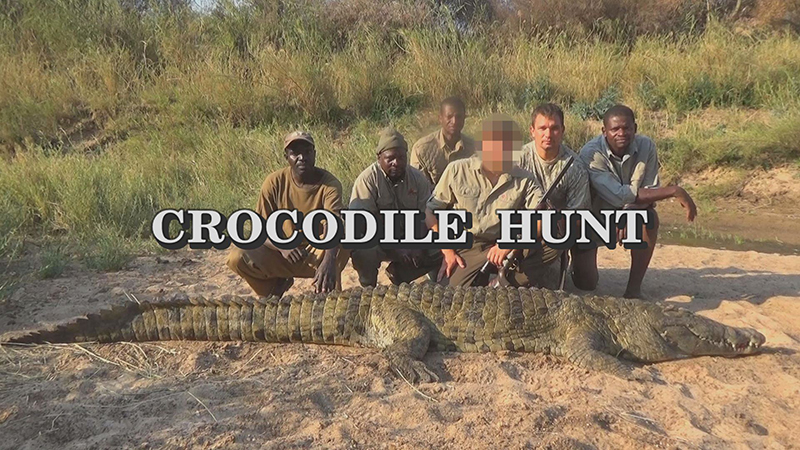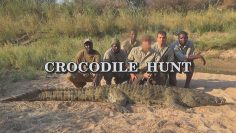Crocodile Hunt
Directors
Biographical
“Hunters in Action” is founded and owned by the photographer and professional hunter Norbert Fenyvesi. Norbert is specialized in hosted hunting trips worldwide where he accompanies and guides hunters around the globe. With Norbert’s more than 200 travel days every year, you can expect continuously new exciting film content on this channel.
Crocodile Hunt (approx. 20 Min)
The crocodile is the largest living reptile on Earth. A remnant of the prehistoric era, this dreaded predator has honed its survival and hunting strategies to perfection over the past millions of years. These abilities make him in our days one of the most efficient killers of waters. The Nile crocodile can grow to up to 4 meters long. A giant specimen can weigh close to 1 ton. Its continuously regrowing teeth line up randomly in his mouth, a breeding ground for bacteria resulting from rotting carcasses. Crocodiles are responsible for the most human lives taken out of all the predators of Africa. It is a small wonder that killing such a dangerous predator is a reason for jubilation for both the hunter and the local population.
One of the methods of crocodile hunting is to scour the banks by boat, looking for the largest specimen basking in the sun. Then the hunters go round the unsuspecting reptile and stalk it taking advantage of the cover of the vegetation and the good winds. The hunter must hit the crocodile’s head precisely for it to become incapacitated. Even so, a crocodile with a head shot may often wriggle itself into the water during its agony, and disappear in the depth.
With the dry season coming, a surprisingly high number of crocodiles may gather around the increasingly shrinking stagnant waters. The local shepherds have no choice but to herd their thirsty cattle to waters teeming with crocodiles. The reptiles ready for ambush below the surface of the water, take advantage of every opportunity to make a kill.
The residents welcome the white hunters arriving to shoot the crocodiles. They place a carcass attached to a pole directly on the beach, and make the treat even more attractive with blood and guts. All the hunter has to do is wait patiently for the intense blood and carcass smell to raise the crocodile’s interest. The hunters try to select the largest specimen from among the approaching reptiles. Once the appropriate size crocodile nears the carcass, the hunter must ideally incapacitate the dangerous beast with one precise head shot. One careless move, however, is enough for the crocodile to become suspicious and immediately retreat into the safety of the deep water.
Placing the bait necessary for the crocodile ambush, mounting the poles holding the carcass and the noise of human commotion can make the giant reptile cautious and suspicious. It often leaves the hunter waiting in vain in ambush because the crocodile won’t approach the bait until after darkness has set, when it can feast undisturbed. Getting the crocodile used to the bait a few days before the start of the hunt can significantly increase the chances of success. The beast will quickly learn that getting the treat does not pose any particular danger. It becomes bolder and as soon as the bank settles down, it immediately goes for the bait. This is when the hunter’s time has come. He can now confidently take his ambush position among the dense vegetation along the bank. The people place a new carcass next to the water in a very visible and audible way. They then contaminate the surroundings with pungent blood and offal. The crocodile takes it as an invitation to its usual lunch and does not take long to approach.










